Tomorrowland '67 [Part 3]
 Mitch
Mitch We continue our Tomorrowland '67 series and begin to focus on each individual Tomorrowland attraction. The first attraction on our list is none other than Walt Disney's esteemed Carousel of Progress.
Carousel of Progress
In case you’ve never hunted for photos of Disneyland’s Carousel of Progress, let me tell you... they are few and far between. If you have ever hunted for photos of the upper level of the attraction you will know... they don’t exist. I’m sure they exist but not on the internet or any book I’ve ever seen. In additon to some photos that do exist, we bring you some custom never-before-seen maps, models, and diagrams.
Walt Disney’s and his “Carousel Theater of Progress”
Walt Disney had a large hand in the development of Carousel of Progress. He kindly shared a behind-the-scenes look at some of the development of the unique attraction in a broadcast called “Disneyland Goes to the World’s Fair”.
He referred to it then as the “Carousel Theater of Progress” perhaps to emphasize that the ride was not a traditional carousel but a theater that rotated like a carousel. Perhaps at this point in time its title was going to include the word “theater”.
Either way, we see an excited and charming Walt Disney share an idea that had been evolving for years. It was an idea that dated back to the concept of Edison Square.
Edison Square’s “Harnessing the Lightning” Attraction
The idea of a family presenting inventions that enrich our daily lives began with Edison Square. Edison Square was to be a residential street and extension of Disneyland’s Main Street, U.S.A. but sadly never came to be.
It was to be located off the east side of Main Street just north of another never-built extension called Liberty Street. Edison Square would have shown “the passing from the ‘old’ of the 19th century to the ‘new’ of the early 1900s”. The exterior architecture would have been a composite of various major American cities from New York to San Francisco. An attraction called “Harnessing the Lightning” would have celebrated Thomas Edison using large dioramas of a family using electricity.
Instead of sitting in a theater guests would have walked from scene to scene in sort of a museum-type setting. Starting on the south side of the cul-de-sac you would have walked counter-clockwise until exiting the attraction on the north side of the street.
You would have experienced an American family sharing life pre-electricity, post electricity, during contemporary time, and what was called "The Electronic Age". Edison Square was never built but as you can see many of the ideas were used in the development of Carousel of Progress.
Carousel of Progress at 1964-65 New York World’s Fair
The Carousel of Progress was originally presented at the 1964-65 New York World’s Fair at General Electric’s Progressland pavilion.
The pavilion was divided into four main parts. The Carousel of Progress was the main attraction. The “Skydome Spectacular”, the “Medallion City” exhibit, and the “Nuclear Fusion Demonstration” were three post-shows found on the upper level of the pavilion.
 Skydome Spectacular at the 1964-65 New York World's Fair
Skydome Spectacular at the 1964-65 New York World's Fair
Carousel of Progress at Disneyland
Walt Disney had the components of the stage show shipped to Disneyland to be a part of New Tomorrowland. G.E. continued their sponsorship. A round two-story building was constructed in Tomorrowland where the old Space Bar food stand and eating area previously stood.
An outer ring of seating, divided into six sections, and six stationary stages in the center of the first level were added. The second level housed the Progress City model.
At this point Disneyland goers had not been exposed to highly animated human Audio Animatronic figures for very long. Mr. Lincoln arrived less than a year earlier (Remember, Great Moments with Mr. Lincoln opened at Disneyland while the World’s Fair was still open for another three months– two Lincolns!). Pirates of the Caribbean with its many human figures had only been open for some three and a half months.
Entrance, Acts 1-4
Guests entered a covered waiting area (see map above) on the west side of the building before loading into one of six revolving sections of seating. The seating area would then move clockwise to Acts 1 through 4.
Animatronic “Father” and “Mother” and their family members hosted the seated audience. They brought their visitors through time from the late 1800s up to the late 1960s/early 1970s, which was considered “the present and/or near future”. They shared the latest technological advancements of each period. Naturally they referenced products of the attraction’s sponsor, G.E.
Act 4 showed the family living in Progress City. A painted backdrop of the radial city’s center towers was visible out the living room windows in the back portion of the stage. It was as if their “all-electric home” was positioned in one of the city’s outer residential areas.
The home was equipped with color TV “with a built-in video tape recorder”. Mother enjoys her “garden club, literary society, and the ladies bowling league”. The temperature-controlled range allows Mother to “set the time and temper controls and relax.” (Perhaps not as entertaining as the voice-operated oven and the mishaps that ensue in Act 4 of today’s CoP at Walt Disney World). The couple references a “jet airport” where the kids are headed to meet Grandma and Grandpa. “They have their own home now in a community for senior citizens.”
Speed Ramp
The fifth rotation brought the audience to a moving speed ramp located directly in front the seating area, center stage. Guests were invited to “spring up out of your seats... through the doorway and up the moving ramp” where Act 5 awaited them. “On the second floor Mother and Father from our theater show will join you to tell you all about Progress City. So please keep moving. Don’t stand in the way of progress.”
The following two photos are from the World's Fair but they represent they Disneyland speed ramp layout. Provided by The World's Fair Community.
Upper Level, Progress City Model
This is where those custom models and maps come in handy. Thanks to a fan who wishes to remain anonymous we have three rare architectural drawings of the upper level. These have been invaluable in determining the guest flow and in the creation of these images.
At the top of the ramp the walkway curved and divided into three platforms leading guests southward in a clockwise direction.
These tiered viewing areas overlooked a large half-circle Progress City (also referred to as the City of E.P.C.O.T.) model. A fourth tier was for passing PeopleMover vehicles traveling north.
The PeopleMover track entered the building on the south side right after crossing the rooftop of Flight to the Moon. It curved around the east rim of the building and exited out the north. Passengers could gaze down at Carousel audience members and the model city.
The opposite side of the upper level was not accessible to guests. Was it used for storage? Did G.E. have a lounge up there? Is that where the maintenance guys took naps? What a large area to not be utilized.
Father and Mother hosted this Act 5 though audio dialogue only. The couple spoke of the city’s various features and spotlights shined down onto the model accordingly. Parts of the model were mechanically animated. Miniature cars, monorails, and carnival rides moved. (The remaining pieces of the model on display today in Magic Kingdom are not animated).
Walt Disney had recorded his ideas for the city of E.P.C.O.T. in a broadcast only months before New Tomorrowland opened and less than two months prior to his death. Little other exposure to this idea was available to the public at the time. The model city was not a part of the World’s Fair exhibit.
The Differences between E.P.C.O.T. and Progress City
Progress City as seen in Carousel of Progress represented an actual working city with full-time residents and could have existed anywhere in the United States. E.P.C.O.T. on the other hand was a prototype city intended for the Florida property (which later became Walt Disney World). It would have been the testing grounds and working template after which “Progress Cities” around the world would have been patterned.
Exit
Guest were asked to exit out doors on the south end of the building near the spot the PeopleMover entered. From there they proceeded in a clockwise direction facing north then down a non-moving outdoor ramp facing south. This ramp is still there today and is used to exit (and occasionally enter) Innoventions.
Relocation to Walt Disney World
Walt Disney World and its Magic Kingdom opened in October of 1971. G.E. felt that their products had been well presented to audiences in California and perhaps audiences in Florida would better enjoy their sponsored show. On September 9, 1973 Disneyland closed the doors to Carousel of Progress. Magic Kingdom built a brand new theater to house the show. This time there were no speed ramp, second level, or Act 5. The theater also rotated counter-clockwise for some reason. Maybe it made better sense to travel in time from left to right?
Somehow (consider it a miracle!) it still operates today and continues to be a nerd-favorite. The Progress City model was hacked into manageable pieces and also relocated to Magic Kingdom. Guests can see see a smaller portion of the model city while riding Magic Kingdom’s PeopleMover.
In a previous post specifically about the Progress City Model we shared just how much of the model was put on display at Magic Kingdom.
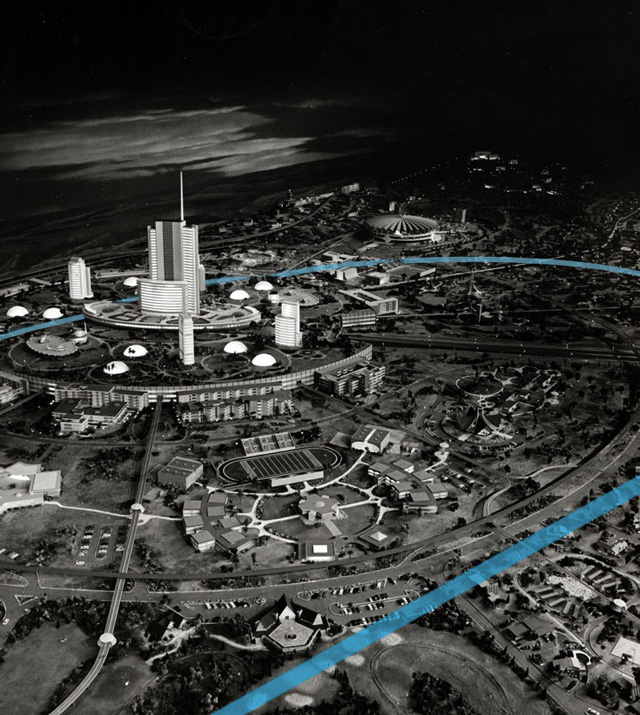
Other Rotating Theater Attractions
The Carousel of Progress was presented in two different theme parks and one fair yet it was never duplicated. Two other attractions, however, did use the rotating theater format. America Sings replaced Carousel of Progress at Disneyland.
Meet the World at Tokyo Disneyland used the same format as well. Plans for a Meet the World attraction in the Japan pavilion at Walt Disney World’s EPCOT Center fell through before the park opened. (Side note: We are currently trying to solve the mysteries around EPCOT Center’s Meet the World and need more info. Was a rotating platform ever built in the large show building behind the Japan pavilion? I have my doubts.)
A Sequel
EPCOT Center’s Horizons (1983-1999) is considered to be the continuation of Carousel of Progress' 20th Century story. In Horizons the family shares their 21st Century lifestyle. Horizons is considered by many to be the greatest theme park attraction ever built or at least the greatest attraction ever torn down.
Carousel of Progress Today
Although you cannot enjoy its sequel, you can still enjoy Carousel of Progress at Magic Kingdom’s Tomorrowland. Acts 1-3 are very similarly to those presented at the World’s Fair and at Disneyland.
Act 4 has been changed a small handful of times. When watching Act 4 today, remember that this version of “tomorrow” is from 1994 and boasts some great mid-90s technology. And sweaters. And Reeboks.
Progress City Model Today
It's wonderful to look at while passing by on a PeopleMover. The model suffers from lack of proper maintenance but nevertheless, it's still there. But please, no flash photography! It looks better under normal show lighting.
A comparison of Magic Kingdom's Carousel of Progress building from 70s and today.
Disneyland's Carousel Theater is still stands and is home to Innoventions. It's not a theater anymore but both lower and upper levels (with a very different configuration) are open to guests.
Working On-set
As a young boy in Magic Kingdom I dreamt of walking around those great Carousel of Progress stages. Some of my fondest moments of my creative career came when I was asked to do a few small projects at the attraction. I was honored to work on some of the animatronic figures, both human and animal, and some of the set work. I painted, repaired, got rid of one of the old “Hidden Mickeys” (my own decision), and adjusted a few things. I remember painting the finger nails on “Father”, fixing a couple of his necks, and painting parts of his four faces.
I even painted the laptop “Mother” is working on. She had been hitting it with her hand requiring some serious touchup work. I gave a couple of the “Rovers” some help. Of course I spent lots of time wondering around observing every detail, from the hand-painted backdrops to the various "G.E" markings to the animatronic birds on the tree branch. Of course I explored the backsides of each set.
Uncle Orville!
What a delight it was to work with some of the same set pieces presented by Walt Disney to the world all those years ago.
Related posts:
Tomorrowland '67 [Part 1]
Tomorrowland '67 [Part 2]
Carousel of Progress Like You’ve Never Seen It
THEN AND NOW: Walt at Disneyland
EPCOT City Model [Part 1]


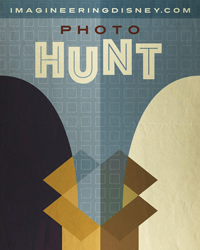
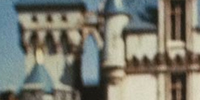
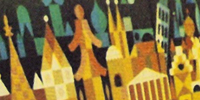
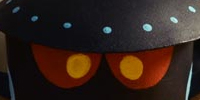
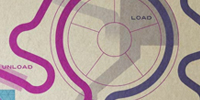
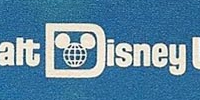
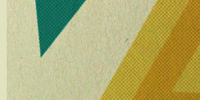
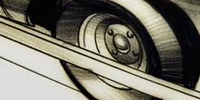
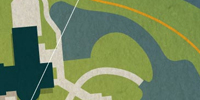
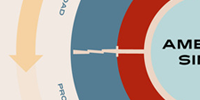
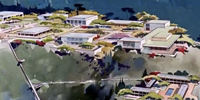
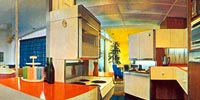
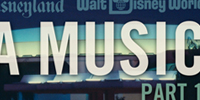
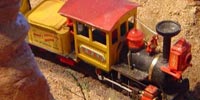
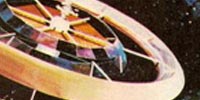
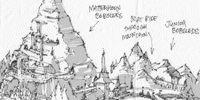
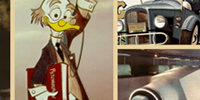
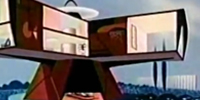
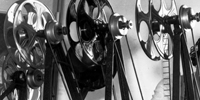
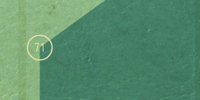
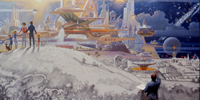
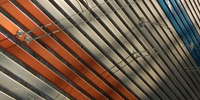
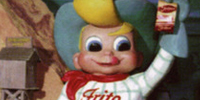
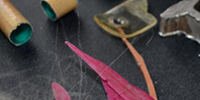
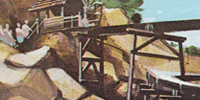

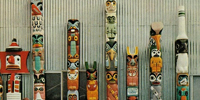
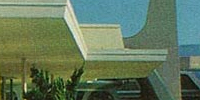
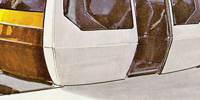
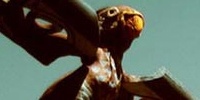
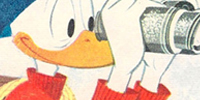
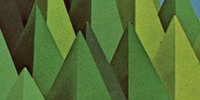
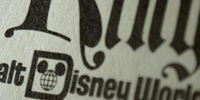
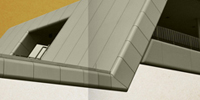


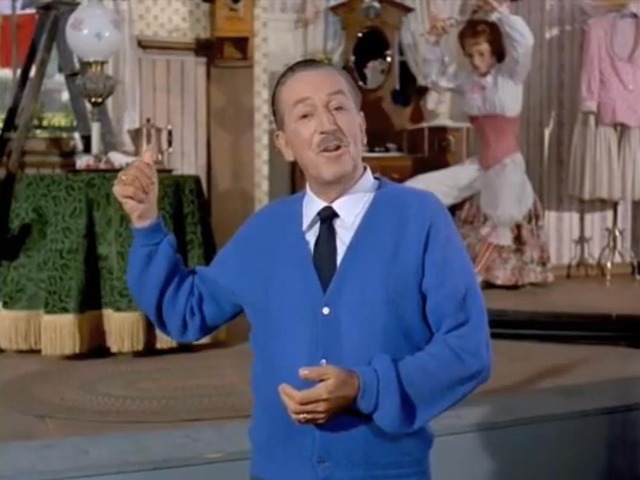


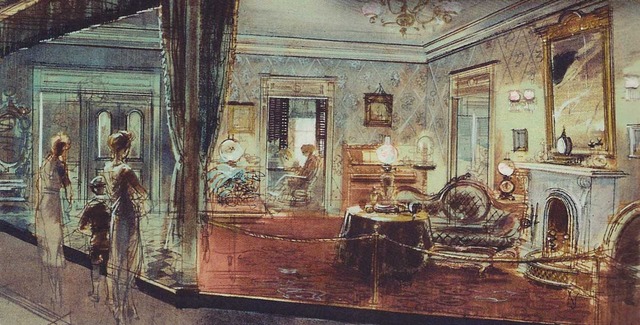

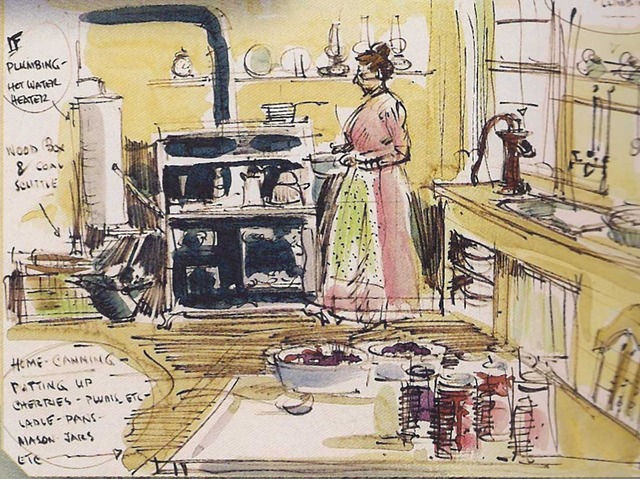

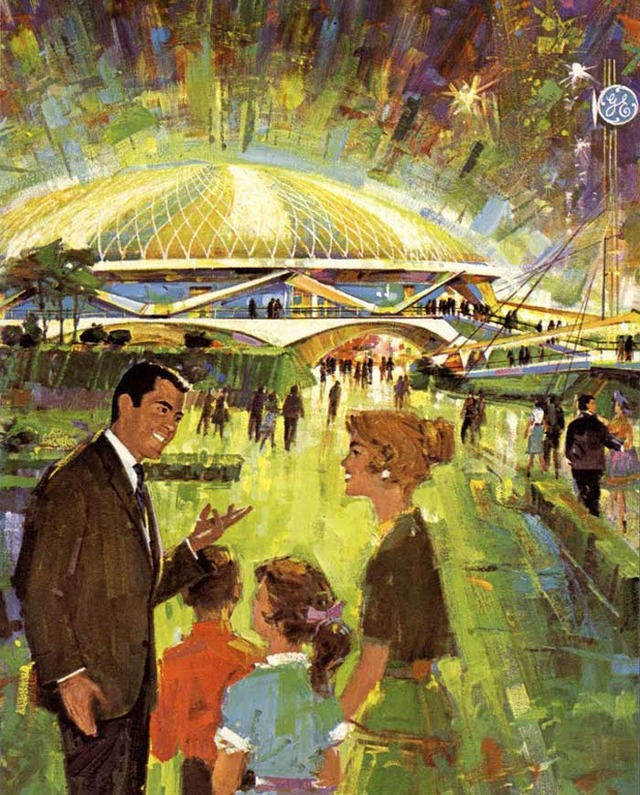



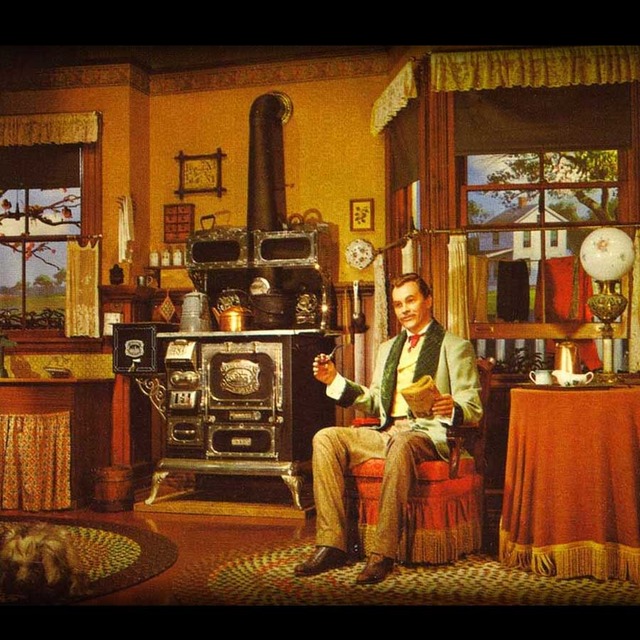

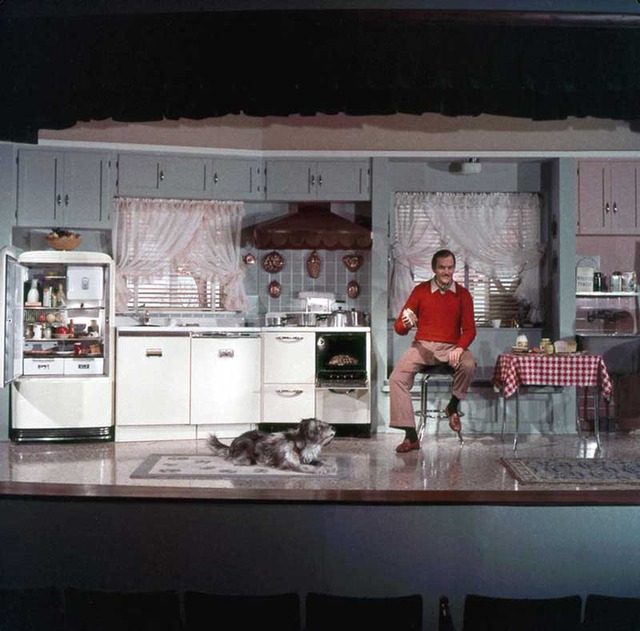

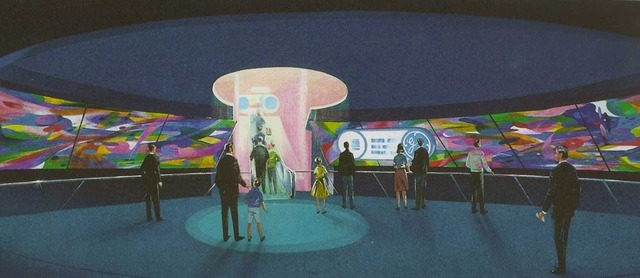




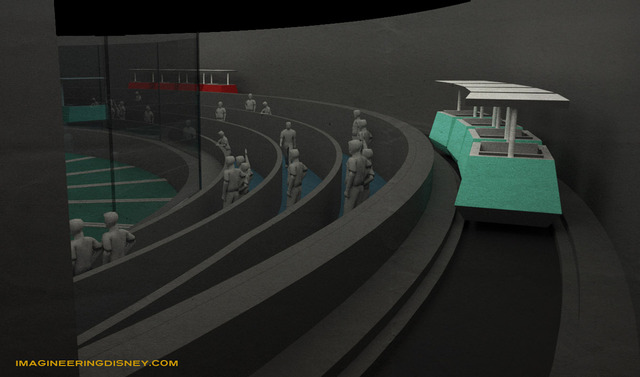



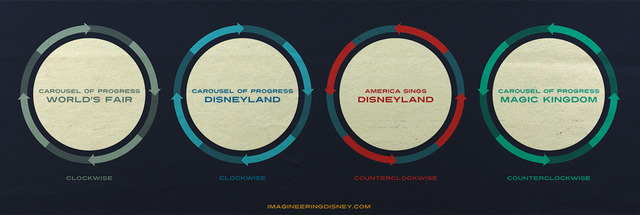



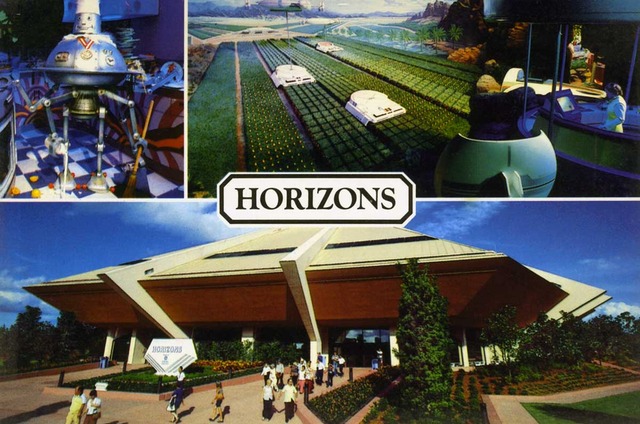

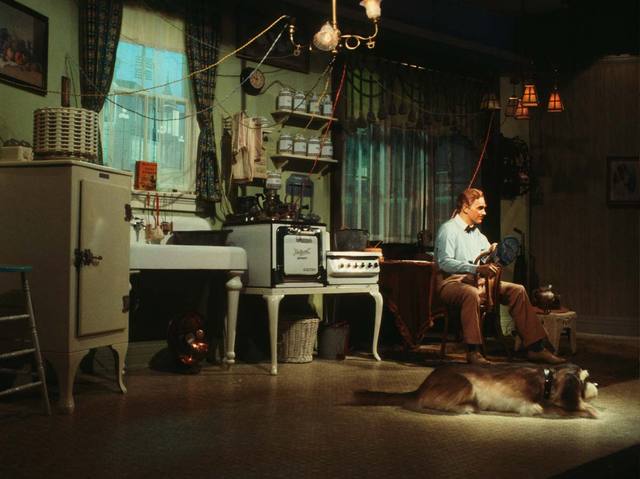

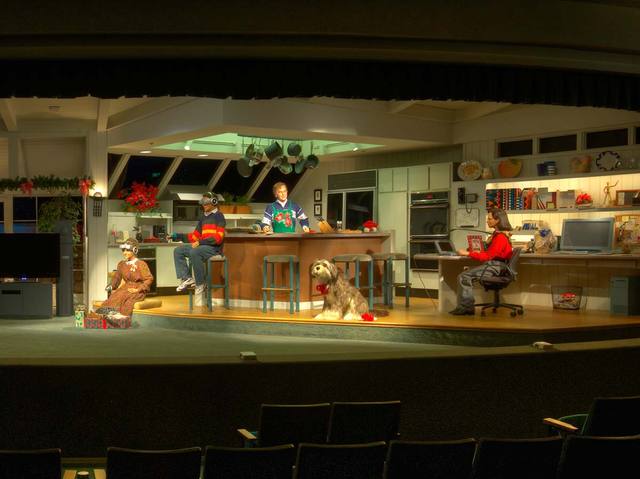




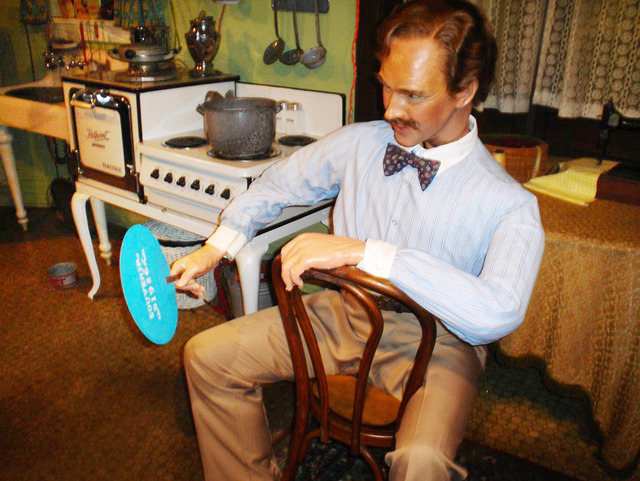

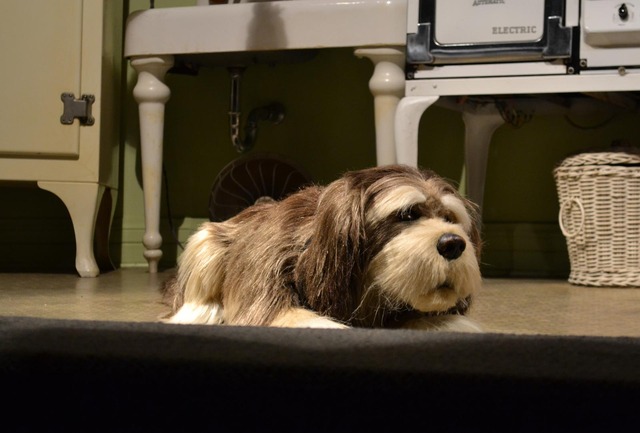

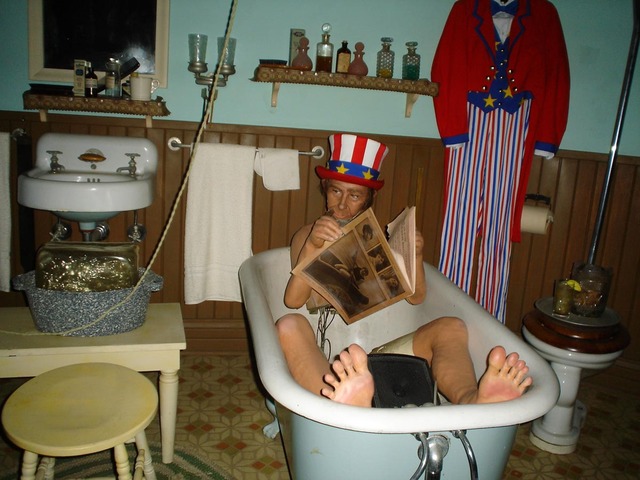

Reader Comments (18)
Hi there, I wanted to add that I have seen some parts of the Progress City model on display with moving parts within the last year. In particular I recall the "double-looped" ferris wheel and some cars on the central road.
Wow. This post blew me away. Esp. love the tidbits you shared at the end!
Fantastic post. I have always wondered exactly how the Carousel of Progress was set up at Disneyland. Now I know. Thank you.
Oh man, this post was FANTASTIC!!!!
Blueprints dated 2-27-1967 show the remaining upper level of the Carousel Theater is shared with a "Exhibit Gallery" (with movable wall....whatever that was.), a "Product Exhibit Gallery", "Building Maintenance", and "Telephone & Electrical Equipment room". After GE vacated the space was used for additional Tomorrowland operations office space shared with offices for park entertainment. The PeopleMover route then featured a temporary wall with oval and circle windows featuring illuminated panels showcasing WED concept art for "Coming Attractions" like Space Mountain and Mission to Mars. At one point one of the panels showcased a dramatically lit scale model of Space Mountain to PeopleMover Passengers. The vacated Progresss City model space was eventually used for The Super Speed Tunnel projection rooms and PeopleMover storage and repairs. When the building was gutted for Innoventions, the TRON Projection Rooms, PeopleMover Service and Entertainment offices were still there.
-Mike Cozart TOMORROWLOUNGE
When Disney moved Carousel of progress to WDW I think they greatly underestimated the impact that the previous versions provided by allowing guests to literally walk up onto stage and into the future. (Actually the floor was level with the auditorium.) To me it was one of the more memorable aspects of the show and ingeniously reinforced the concept of moving forward. Although the Speedramp didn't have the kalidescope mirrors of the NYWF version it was still exciting to ride it to the second level. Your virtual model of the Progress City does wonders describing what the space was like at the top. I remember the "floating" handrails at the different levels, (like in Adventure Thru Inner Space's lobby), the amazing kinetic quality of the model, the local GE nuclear power plant to the right side, and the image of the grandparent's airplane taking off across the sky. But most impressive was what I consider to be the final act of the show: the amazing view from the exterior balcony of a fresh and futuristic Tomorrowland in motion.
Alan, Estelle, Jeff, Connie- Thank you all so much for enjoying!
Mike Cozart- So interesting about the "Exhibit Gallery" and "Product Exhibit Gallery". I was told once that there were displays before getting to the Progress City Model but this person's memory didn't include much more than that. I had no idea about the oval and circle windows with WED concepts. I definitely didn't know about the Space Mountain model but it totally makes sense. These are the reasons I need a time machine more than ever.
Omnispace- I was wondering if the Disneyland ramp had the kaleidoscope mirrors. I assumed it did but wasn't sure. Interesting that it did not. As for the hand rails, I would love to complete these models and if/when I do, I'll include those ATIS-type rails.
This is one reason I do these posts. I know people will come forth with wonderful knowledge!
The Disneyland speedramp was very different than the World's Fair version. First of all, the DL version was not centered in the stage. It was built at an angle towards veering to the left. The ramp tunnel itself was was like a curved rectangle tunnel made of a translucent plastic. It's smallest width was the one at the entrance and the tunnel widened as it reached the top. The tread of the ramp was narrow -2'-6". From the theater, the ramp was designed to appear to be ascending into an circular opening in the ceiling just beyond a futuristic arch proscenium. The left and right of the proscenium was a angled wall just beyond the hand railing made from translucent plastic --the right side featured the Carousel of Progress sign shape that was illuminated reading "Welcome to Progress City".
I was about 5 years old when the Carousel of Progress left Disneyland--I have strong memories of the Progress City model --and some of the theater scenes --but none of the upramp. A friend of mine just a few years older than me can't believe I don't remember seeing the "rockets" or "Future Cars" as he refers to them as you went up the speed ramp. ??? He said they were like the shapes of rockets or vehicles moving behind the walls going in the same direction. I've never heard anyone ever mention these details-HOWEVER on the blueprints for the ramps and exit stage --to the left and right --behind the translucent screens are shown double sets of TRACKS creating a complete circuit -- with notes on the tracks (4 in total) reading "track #1" "track #2" "direction of car travel"!!!! There appears to have been some kind of moving props or models to create the illusion of some kind of vehicle traffic all heading to Progress City!! The speedramp tunnels appear to have has some kind of directional projections heading upwards to the second floor. Any photos I've seen (black and white) of the speedramp tunnel appears as all white--but a flash inside the tunnel would have destroyed any of the projection effects if they were even operating for the photographer taking the company photos.
Can Imagineering EVER top anything better than TOMORROWLAND 1967!!???
Does anyone out there remember these "spaceships" or "future cars" shapes being seen as you entered the Speedramp???
Mike Cozart -Tomorrowlounge
Mitch,
Do any of the original set pieces and/or props from the World's Fair version remain in the WDW version? I've always wondered how much of what we see onstage in the current version was used in the original attraction. Great post! Keep 'em coming!
Mike, Your post reminds me that George McGinnis described his involvement in the speedramp scene on The Horizons Tribute a few years back. Here's what he described back in 2006:
"One of my first projects was the futuristic mobiles we saw on both sides of the stage -- a chainveyor device carried transportation shapes projected on to the frosted glass. Architectural forms were static but their shadows also projected. I worked nearly all night before opening to get them finished. One of my architect friends commented on those forms -- "Stay out of architecture McGinnis..." "
and...
"Disneyland version July '67. Yale Gracey, WED's one-man special effects department, had abstract shapes prepared for the chainveyor. Colored lights created changing patterns on the two translucent windows which stretched across the stage.The speed ramp was centered between the two windows."
"John Hench wanted something more future oriented than Yale's abstract forms and asked me to come up with the transportation shapes -- planes, helicopters and spaceships. You can possibly imagine the effect colored lights from different angles would have. Multiple images overlapped each other creating changing "rainbow" of colors. It was pretty, but nothing you would stand and watch for long -- a kind of animated wallpaper. The guest was invited to walk on the stage and take the speed ramp up to the Progress City model."
Interesting how the pieces are fitting together. I don't remember anything about the projections. I must have been focused on getting to that speedramp. -Dean
this is awesome
Mitch, I really enjoyed the portion on Edison Square. Do you have an image of the whole map that is shown depicting where Liberty St and Edison Square would have been? I don't think I've ever seen that map and would love to. That bit of scroll paper in the bottom right corner on the crop has got me wanting to see more!
I am doing a design thesis project and would like to know where I can get a hold of the 1967 blueprints Mike Cozart? I would really appreciate it!
Great article, Mitch! I especially liked the behind the scenes photo's.
It would be great to see this attraction updated (while still keeping Walt's vision intact of course). In my humble opinion, moving the show to 40 year increments instead of 20 would be a great way to help current audience members connect a bit more (early 1900's, 1940's, 1980's, and 2020's). This would also allow two of the original show stages to be used. Again, this is just my opinion of course. :)
Thanks again for a great article.
Thank you for the information on EPCOT, and the write up on Horizons. I was fortunate enough to see Horizons multiple times in the early 1990s. It was, hands down, my favorite DisneyWorld attraction. Hopefully, someday, Disney does another Horizons.
I see no mention here of the color organ that I remember starting the show off in '70 or '71 - it filled the full space each stage took, but was a vertical wall of what I took to be that diamond-shaped plexiglass used in color organs all the time. There was a narrator talking about seeing sound, and different sounds were played to different patterns of light. It was then a big surprise when the whole audience started rotating to what is Act 1 here.
Was that temporary? I am almost certain it was at the first and not at the end of the show, but it was a long time ago - and funny thing my memory doesn't seem to be getting better even with more practice...
Thanks so much for the layout of Progress City, it really jogged some memories of what was one of the most impressive exhibits I have ever seen. I am now working with a science museum on a model of an energy efficient city of the future, and my memories of Progress City sent me searching online for it and so happy to find all this info!
The color organ was my favorite part of the show when I saw it in the late 60s & I can't find any videos of it.
Hi I worked at Disneyland from 1990 to 1998 ...I absolutely loved that building and took every opportunity to explore it from top to bottom ...I know it like the back of my hand ...the exit ramp did not have mirrors that was at the world's Fair ..the exit ramp for Disneyland C of P had a thick industrial wallpaper I have a piece of this wallpaper as well as a small piece of the ceiling tile ...after C of P left for florida the speed ramps where removed and they cut a opening into the ramp hallway and into the other side so the maintenance people could go to the other side of the building without having to go around ...the opening from the stage to the speed ramp was closed in to make act one of America sing's .. In the center of the building was a walkway that went all the way around to each stage ...each stage had an access door some of them had two ...on this same inner walkway there was a door that opened to a staircase for castmembers that went up to the top of the speed ramp ...after America sings took over and they put in the super speed tunnel for people mover the staircase was cover at the top buy the new floor of the people mover speed tunnel ..as was the exit speed ramp tunnel ....just before I left in 1998 when they started gutting the poor building I went through it again ..it was gutted back to the main original state of carousel of progress.. The office's that they put in the exhibit area of the exit where all gone and it was now back to it's original state ..big open room ment for display of he appliances ( which never happened )at the left side of the exit display area there was a simple door that went into the GE executive lounge it had a two burner GE electric built-in two burner hotplate and a sink and a GE refrigerator once upon a time there was also a private bathroom ...on the right hand side of the exit area was the exit for the model city ..there was an automatic folding sliding door like the one used in mission to Mars preshow entrance... To my surprise the door still was operational and being a ride operator I of course opened and closed it a few time's and was probably the last person to do so ...in the model city room you could see where everything used to be without the speed tunnel there ... I sketched out a diagram on a piece of paper to remember where everything was ...I hope I still have it after all these years ...going through that building was one of the best experience's of my life being an America sings fan ...